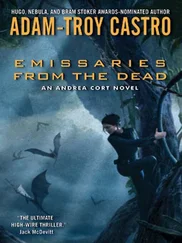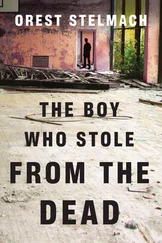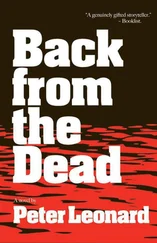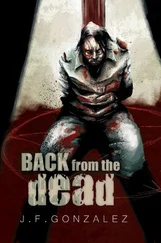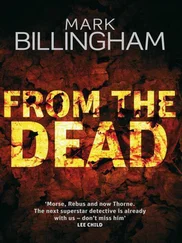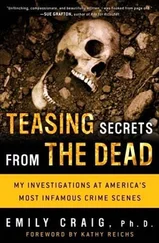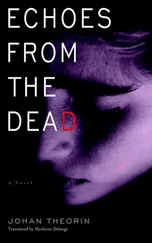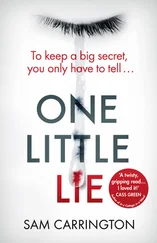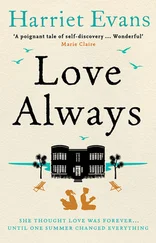However, a great deal of biological information is simply subjective, and it may not show up in the objective language of computer matching. What if the missing person's report describes a daughter's hair as golden blond-and the investigator who finds the remains thinks of her hair as closer to red? Even if both reports are on file, the NCIC isn't going to match them up. The same goes for descriptions of tattoos or scars or any other distinguishing feature-it's hard to do a computer match by verbal description alone.
Missing persons reports are also legendary in their shortcomings because people don't necessarily know what kind of information will help investigators identify their loved ones. Most people's impulse is to describe a missing person as if they wanted to pick him or her out of a crowd-blond hair, blue eyes, mole on the left cheek. That's not necessarily the information that will help us make a forensic identification. Did she suffer from scoliosis when she was young? Does he have a broken bone that eventually healed, or has he maybe had some back surgery? Does she file her nails into a particular shape or use a unique polish? Is he a heavy smoker-enough to stain his teeth? Did she wear braces as a child? Do you even have his dental records or her medical records? Then, too, the people who take down missing persons reports aren't scientists and they don't necessarily know the kind of information we need.
In the end, the biggest difficulty in identifying missing persons is probably the sheer volume of people who seem to have simply vanished. The NCIC database contains literally hundreds of thousands of names, and for any search you conduct, you might easily get dozens, hundreds, or even thousands of matches. Trying to sort through every single one of these can be an investigator's nightmare.
Suppose, for example, that you find a set of bones in the woods that you identify as belonging to a middle-aged White man about six feet tall, of average weight, with no unique dental features, and with no unusual fractures, scars, or tattoos. Your best guess puts his age at thirty to forty, though you realize that you might be off by three or four years either way. You can only estimate how long he's been there or when he disappeared. If you put information like that into the NCIC database, you'd end up with probably a thousand matches, going back for at least ten years and extending over all fifty states and Canada.
Maybe you can narrow it down a bit. Perhaps your remains show evidence of a broken collarbone that healed shortly before death. So you ask to see only missing persons reports that mention such an injury. That should knock out lots of matches-but what if the person who filed the report didn't know about the collarbone or didn't bother to tell the police about it? Then there's no chance of a match even if your guy's report is in the system.
Or suppose you put the man's age at thirty to forty and he's actually forty-one? Your computer search will blithely eliminate the one report you need-while providing you with hundreds, maybe thousands, of reports that you don't need. (I always add an extra five years on either end of my age estimates for this very reason-even though it doubles, triples, or even quadruples the number of reports I have to sift through.)
I could go on and on. Women whose families add two inches to their height because they're used to seeing their loved one in high heels. Parents who give the police detailed descriptions of a son's tattoo-but the remains you're looking at were destroyed by fire or decomposed in a lake or have become totally skeletonized by the time you find them. The gaps between missing persons reports and unidentified remains are one of the most frustrating and heartbreaking parts of this job.
We've had some major breakthroughs in the last few years. The Internet is at the heart of most of these, and the new publicly available databases for missing adults are a tremendous help. Before these online services, only missing children had a national clearinghouse, through the National Center for Missing and Exploited Children. Now, with the help of the Internet, people whose adult loved ones are missing can be certain that the information on their parents, children, spouses, or friends will have a chance to go beyond the police department and out to the ordinary citizens who might be able to provide information.
Of course, sometimes you just get lucky. Or a flash of intuition mysteriously cuts through the statistics, as it did with Tent Girl. Sometimes, too, the Internet can be the vehicle for both luck and intuition, enabling identifications that can seem downright miraculous. Such was the case of Letitia Luna, a young woman who disappeared-seemingly into oblivion-on August 7, 2000.

For me, Luna's story began on August 14, 2000, when a Mississippi riverman discovered a waterlogged body caught between two barges traveling upstream to the Ohio River. The autopsy findings revealed that the remains had once been a White female, twenty to twenty-five years old, with long black hair and a slender build, clothed in jeans and a T-shirt. She also had a watch on her wrist and a pair of eyeglasses in her pocket. Although the body was badly decomposed, the medical examiner could still make out the faint traces of a rose tattooed on her wrist.
The Carlisle County coroner and the state police publicized the case along the western border of the state. Thinking that the woman had fallen or been thrown into the river and had then floated downstream, the police asked their colleagues in all of the river cities above them if they had a missing person who fit this description. They didn't.
About six months later, I got a call from Kentucky Medical Examiner Dr. Mark LeVaughn. Although Jane Doe's body was badly decomposed, there was still enough soft tissue left for a conventional autopsy, so no one needed me to analyze her bones. Instead, I was being called for my skills as a forensic artist: Mark thought I might be able to do a facial “restoration,” a sketch based on autopsy pictures and forensic information.
“I'll give it a try,” I offered, and asked to see the autopsy photographs. Ideally, I could use these as a template to create a sketch showing what the victim might have looked like when she was alive. Then the police would circulate the sketch widely, hoping that someone would recognize the person and come forward.
But when Mark sent me the photos, I realized they'd be no help. This young woman's face was far too decomposed for me to be able to draw a recognizable image of her.
The only other option was to boil her head in my Crock-Pot and use the clean, dry skull for a clay facial reconstruction. This was a time-consuming, chancy process-even with the best clay reconstruction or a good sketch, there was no guarantee that the right person would see it and come forward-so I wanted to exhaust all other chances of giving her a name. Since there was so much identifiable evidence associated with this victim, I persuaded the police and coroner to continue searching for her identity, promising to do a clay reconstruction-but only as a last resort.
Almost five months later, the young woman still didn't have a name, and I was scheduled to start the facial reconstruction on the following Monday. Now it was three o'clock on Friday afternoon, and I found myself in the unusual position of being done for the week. Acting on the same elusive intuition that had apparently driven Todd Matthews, I flipped on my computer and began yet another search of missing persons sites on the Internet. This was hardly the first time I'd done such a search-but, today, for some reason, I was drawn to the website operated by the Nation's Missing Children Organization and Center for Missing Adults (NMCO). Sometimes my eyes and brain make a mysterious connection that puts me into an almost trancelike state, and it was in this condition of heightened awareness that I flipped through the pictures in the missing persons gallery, one image at a time.
Читать дальше


